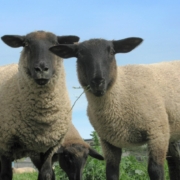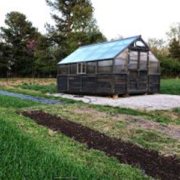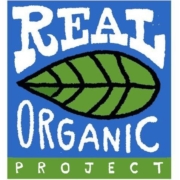Greens as a Secondary Income from your Cash Crop Plants
 Print This Post
Print This Post
By Audrey Kolde, NCAT Agriculture Specialist
I find great joy in incorporating green vegetables into my meals. Yet, we tend to restrict ourselves to greens cultivated primarily for their leaves, leaving them susceptible to bolting in high temperatures or losing leaves to disease. But did you know that our gardens have delectable green vegetables available for harvesting and consumption while we wait for the fruits to grow. As a result of my appreciation for all things green, here is a list of 13+ plants with nutritious leaves.
Sweet Potato Leaves
Sweet potato greens can be blanched to create a beautiful texture that goes well with ham hocks or coconut curries. When selling, they can be cut close to the leaf and bagged or bunched.
Hibiscus Leaves
The leaves of hibiscus plants have a tart flavor that reminds one of lemons. Hibiscus plants take a long time to produce their roselles, but they bring so much joy that it’s worth the wait. They are excellent in green smoothies, pestos, or with fish dishes. It’s best to sell them by the bag with some samples for people to try.
Okra Leaves
Bush okra or jute mallows are thick, succulent leaves that yield a slimy sauce like okra pods. The flavor of the leaves is mild but a little grassy; thus, it works well with bold flavors such as garlic, onion, and peppers. It is found in many curries and pairs well with meat dishes.
Cassava Leaves
Cassava leaves can be eaten if they are ground and cooked thoroughly. Simmering the leaves makes a thick stew or soup. Most often, leaves are ground-blanched and frozen to preserve them. However, it’s crucial to ensure proper processing to remove cyanide.
Cucuzza Squash/Tenerumi Leaves
Cucuzza squash/tenerumi is a vining squash that is resistant to cucumber beetles and has prolific growth in the summer months. When selling the leaves, they are often bunched together and should be kept on ice to prevent wilting. You can use these leaves and fruits in summer soups and pasta dishes.
Winter Squash Leaves
All parts of the squash family plants are edible, from leaves to stems, flowers, fruit, skin, and seeds. Though they may feel rough, the young leaves from winter squash soften when cooked. You can remove the leaf’s stringiness if it is bothersome. They are usually sold in bunches.
Southern Pea Leaves (Bo)
Pea leaves can be used in soups, stews, and stir-fries. They have a slightly bitter taste, like spinach or collard greens, but with a more earthy and nutty flavor. These dark green leaves are rich in nutrients and are commonly used in cooking to add flavor and texture to various dishes. Harvest the leaves when young and tender, as older leaves can be fibrous.
Fava Bean Leaves
The green leaves from the fava plant have a fabulously fresh yet nutty flavor. If you’re lucky enough to find them, try sautéing them to highlight their delicate flavor. Sell them bunched.
Pea Tendrils
Tendrils are the curling, clinging parts the pea plant uses to hold onto supports. Young pea shoots and tendrils are tender but also crisp and tasty with a fresh, pea-like flavor. These are best eaten raw.
Amaranth Leaves (sometimes Callaloo)
Amaranth leaves are consumed globally as a leafy green vegetable. They have an earthy, mildly nutty flavor and taste like spinach. You can eat them raw or cooked.
Hot Pepper Leaves
The leaves of sweet and hot pepper plants are edible and have a gentle and aromatic flavor. Eating the leaves of chili peppers is a common culinary practice in Korea and the Philippines. They are boiled and cooked and used in various recipes. It is important to note that you should not eat pepper leaves raw.
Carrot Tops
Carrots originated in Persia and were cultivated for their aromatic leaves and seeds. They are added to smoothies, pestos, tabouli, and soups. Usually, you have them when harvesting large amounts of root carrots for storage.
Brassicas (Broccoli, Cauliflower, Radishes, Kohlrabi, Turnips)
You can cook all brassica leaves just like collards. They have a similar mild flavor, making them perfect for sautés, stir-fries, braises, and soups without overpowering the other ingredients.
To make selling leaves more effective, it’s a good idea to emphasize their nutritional benefits and provide recipe suggestions to potential customers. It may also be helpful to experiment with different names for the leaves to make their use and preparation more accessible to shoppers. For instance, amaranth is sometimes called “Asian Spinach,” which can help buyers understand how to cook it. These products are best marketed directly to consumers, local chefs, or specialty markets, although I hope this will change. As farmers who work in unpredictable climates, we know the importance of growing a diverse range of foods and harvesting various parts to make up for times when cash crops are scarce. Although cutting leaves may slow fruit production, it’s often a necessary part of plant pruning. As U.S. farmers, we take pride in growing produce that feeds diverse cuisines, and it’s rewarding to see previously composted plant matter being sold and consumed.
Note: The young leaves of certain vegetables, such as sweet corn, southern peas, white onions, and squash, are the only tasty ones. Other leaves from these vegetables are edible but will not taste very good.
| Leafy Green Type | Portion of the Green to Harvest | Texture | Flavor | Eat When Fresh | For Cooking |
| Sweet potato | Stem and leaf | Soft and buttery | Mild, earthy | (Yes) | Yes |
| Hibiscus | Young leaves | Smooth | Tart | Yes | Yes |
| Okra | Young leaves | Rough | Grassy, mild | Yes | Yes |
| Cassava | Tough | Earthy, bitter | Yes | ||
| Cucuzza/ tenerumi | Young leaves | Soft | Nutty, bitter | (Yes) | Yes |
| Winter squash | Young leaves | Smooth, (stringy) | Mild, vegetable | (Yes) | Yes |
| Southern peas | Young leaves | Smooth | Nutty, bitter | (Yes) | Yes |
| Fava beans | Stem and leaf | Smooth | Nutty | Yes | Yes |
| Pea tendrils | Stem and leaf | Crunchy | Sweet | Yes | |
| Amaranth (Callaloo) | Leaves | Smooth and soft | Mild, nutty | Yes | Yes |
| Hot peppers | Young leaves | Smooth | Mild, aromatic | Yes | |
| Carrot tops | Tops | Crisp | Earthy, aromatic | Yes | Yes |
| Beet tops | Tops | Smooth | Earthy, mild, and sweet | Yes | Yes |
| Brassicas | Leaves | Smooth | Bold | Yes | Yes |
Related ATTRA Resources:
Market Gardening: A Start Up Guide
Scheduling Vegetable Plantings for Continuous Harvest
Agroecological Crop Selection, Part 1
Other Resources:
Year-Round Leafy Green Production
This blog is produced by the National Center for Appropriate Technology through the ATTRA Sustainable Agriculture program, under a cooperative agreement with USDA Rural Development. ATTRA.NCAT.ORG.











 joost.j. baker wikicommons
joost.j. baker wikicommons